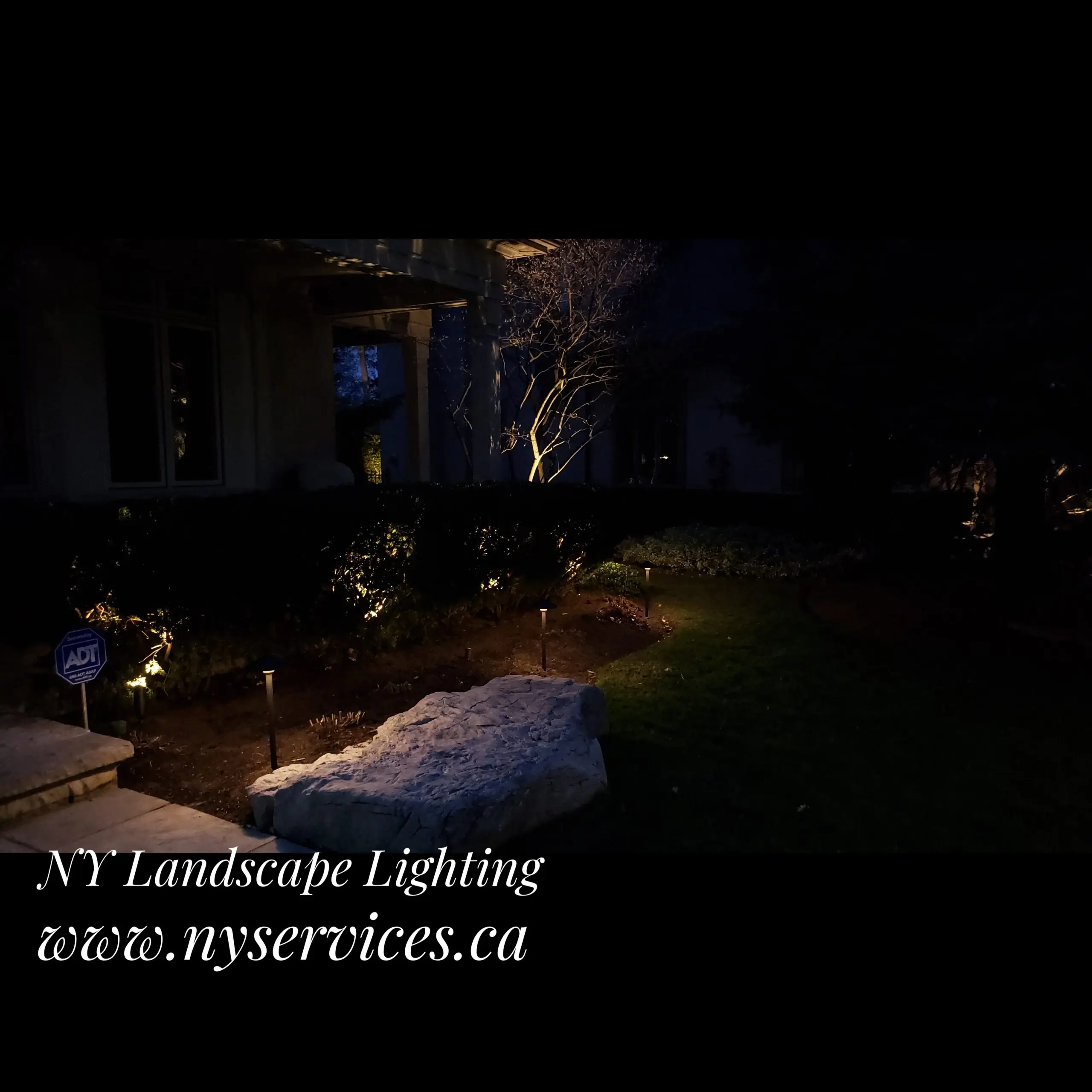Landscaping is the art of arranging and designing the features of a specific area of land. Landscapes give an embellishing touch to a property, be it a residential or commercial place. With landscaping, you can create the perfect outdoor living space that is functional, and it should be designed to optimize your comfort and enjoyment.
When creating a beautiful entertaining area outdoors, not only do you have to consider the landscape design but the landscape lighting as well. Improving your outdoor lighting will increase the safety, security, and value of your home.
Lighting is a use of an artificial source of light for illumination and radiance. It is a key element of architecture, interior design, and of course, landscaping. Residential lighting uses either incandescent lamps, fluorescent lamps, or low voltage lighting, and often depends heavily on movable fixtures plugged into outlets. Built-in lighting is typically found in kitchens, bathrooms, and corridors and in the form of hanging pendants in dining rooms and sometimes recessed fixtures in living rooms. While garden lighting, path lights, up lights, wall lights, post lights, and step and deck lights, among other things, are commonly found in areas outside of establishments.
Landscape lights let you enjoy the beauty of your yard, garden, or any outdoor space even when it is dark. Lighting can enhance any landscape by extending the amount of time people spend in outdoor spaces, highlighting unique features, adding ambiance after dark, and safely illuminating tripping hazards. Moreover, it will make the landscape even more dramatic, with well-placed outdoor spotlights and washes casting enticing shadows and highlighting the best plants, water features, and other facets.
When it comes to lighting your landscape, a little goes a long way. That’s because your eyes need less light outdoors than they do indoors to see the light, shadow, and pattern. To plan your outdoor landscape lighting, start with a walk around your yard or garden at night. Envision how and when you want to use your outdoor spaces, and tailor your landscape lighting to suit those needs. When you’re ready to choose the fixtures and layout, use these landscape lighting ideas, including tips for the best placement and how to avoid common issues, for a well-lit outdoor space you can enjoy long after dark.
Keep in mind that lighting needs to be designed perfectly balanced. You want a well-lit outdoor area, but too much lighting won’t be good. The right lighting can lift your spirits and make you more relaxed and productive. Lighting is an essential ingredient when you’re decorating — not the afterthought that many of us consider it.
The right lighting lifts the mood, inspires productivity, and motivates us. Every area should have a mix of lighting, including overhead, accent, and task lights. Features in resorts and restaurants that earn oohs-and-ahs from guests eventually trickle down to the residential sector in some form. And, innovations we find in the home gradually move to the outdoors. This is the case with landscape lighting trends as well.
Landscape lighting technology has evolved significantly in the last five to seven years. More recently, the availability of cost-effective LED lighting makes operating landscape lights efficient and easy on the wallet like the low voltage lightings.
To mention, LEDs changed everything. About ten years ago, when LEDs entered the picture, they rocked the world of low voltage landscape lighting. Although halogen lamps are still around, most contractors prefer LEDs, even for the older systems. Incandescent lights are a thing of the past. LED technology has made the whole process of installing, repairing, and retrofitting these systems practically foolproof.
Most landscape lighting today is low voltage and with good reason. Unlike 120-volt systems, it’s safer to work with and less costly to install. And though low voltage lights receive one-tenth the power, thanks to a step-down transformer, there’s no limit to the effects they can achieve, from ethereal moonlight beamed down from a tree canopy to a subtle glow that washes over a low garden wall. Low voltage lighting systems use a transformer to decrease standard line voltage to 12 or 24 volts. It is also used in recessed, track, pendant, landscape, and show lighting applications. It is most helpful when it comes to trying to deliver light to a close, difficult-to-access area.
There are a lot of outdoor lighting options to choose from. You can use UP lights, path lights, garden lights, well lights, wall and post lights, under coping and step lights, and mini in-ground and deck lights. And there are a lot of modern lighting fixtures nowadays that have a variety of functions — from installing lighting in-ground, lights to the wall, on the steps, decks, and many more. You can also mount garden lanterns next to your windows and doors as added safety to your homes.
The perfect combination of colors and highlights of using UP lights will leave your guests in awe. This placement of the lights on the floor provides a single color that illuminates the wall and the ceiling. The primary purpose of uplights is to add ambiance to a room or color to an outdoor location. Oftentimes uplighting is the most cost-effective way to improve the look and feel of a space. Uplighting is one of the most basic forms of landscape lighting.
Moreso, installing outdoor lights is just as much about safety as it is about aesthetics. This is why path lights are vital. If you’re navigating your landscape at night, you need to be able to see every step you’re about to take. Placing path lights along your walkways is a practical way to avoid accidents. Path lights are an essential outdoor fixture all yards should have.
On the other hand, garden lanterns may be used as lighting or to illuminate specific areas of your garden. Installing garden lighting will attract the attention of those walking by. Garden lighting offers both physical and esthetic advantages to your garden.
There are also lighting fixtures that are more used for providing ambient lighting rather than focused bright lighting. Well lights are an essential thing in landscaping. It is an in-ground fixture most commonly placed in front of trees, bushes and shrubbery, flag poles, and architectural columns. These fixtures are designed to illuminate taller landscape features without being able to see the fixture. The size, bulb type, and shield on the face of the fixture would vary based on the well light’s application.
Wall lights, as an example, are usually used for decorative purposes. When a more architectural light is needed, post mount lights are designed to install onto a post or on top of a structure. They’re commonly used for entries, gates, fences or around a deck. And when accent to architectural details and added safety to dark stairs are needed, deck and step lights can be installed directly into a yard’s hardscape or decking.
With so many outdoor lighting options to consider and so many types of fixtures to choose from, consumers rely on experts to steer them toward the right system for their space. This requires contractors to stay up on the latest lighting design trends and technologies to recommend the right solutions.
And here in NY Landscape & Outdoor Lighting Services, we are experts who can help you illuminate your landscape using the best and efficient customized lighting solutions to tailor-fit your needs.
We service Toronto, Etobicoke, Vaughan, Richmond Hill, Aurora, Newmarket, King City, Whitchurch-Stouffville, Markham, Mississauga, Brampton, Caledon, Oakville, and Milton.








